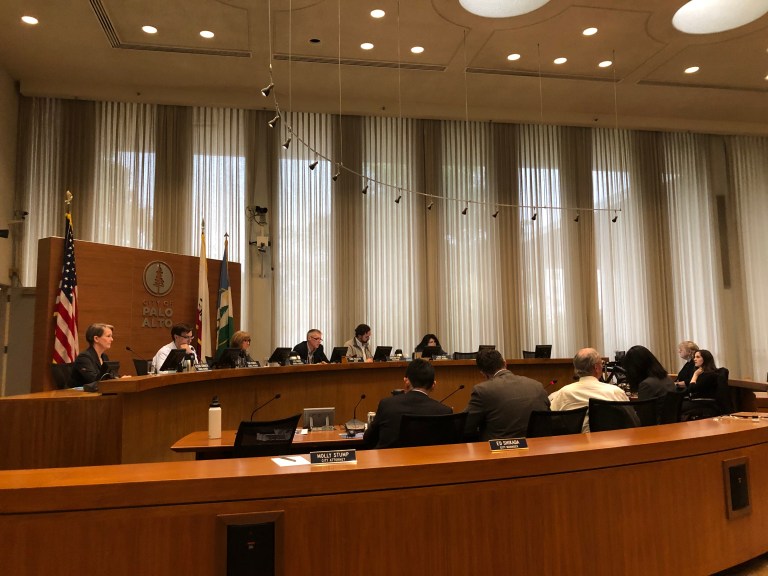A resolution on aesthetic standards for wireless antenna and modification of wireless ordinance standards was passed by the Palo Alto City Council on Monday evening.
At first, several Palo Alto residents spoke out in opposition to the resolution, mainly because it did not specify a minimum distance for antenna from schools or residential areas, and because of concerns that the process of wireless antenna installation would not include public hearings. Following discussion, the motion passed unanimously with amendments.
The modifications called for the council to return with explicit hierarchies of preferred zones and antenna installation type. The council was also asked to present list of city buildings for antenna, recommend distances from home and schools and review the effectiveness of the ordinance in a year.
The council hosted a study session to discuss the annual Earth Day Report.
City Council staff presented the two parts, a resolution and ordinance. The resolution outlined objective pre-approved standards for installation of new antennas for telephone companies like Verizon, AT&T and T-mobile to support 5G. The options for antenna were an underground vaulting design, a top mounted design, a minimal sunshield design or a design to hide them behind existing street signs. The ordinance modifications were meant to align the city’s protocol with the federal law.
The city was working to meet its April 15 deadline to update the Ordinance for wireless communication facilities (WCFs) to align with recently adopted Federal Communications Commission (FCC) regulations. The regulations require that wireless broadband deployment, or the process of wireless facilities installation, be accelerated by removing barriers to infrastructure investment, according to the City Council staff report.
This law only allows for objective aesthetic standards of antenna installation architecture.
“After April 15, 2019, the City will not be able to require compliance with its subjective architectural review findings and will not be able to regulate aesthetic impacts of WCFs unless and until it adopts objective standards,” the report reads.
The federal law goes into effect on Tuesday.
“If we don’t have objective standards [on Tuesday], the council will not be able to give aesthetic review,” clarified Albert Yang, who presented the item.
Mayor Filseth added that, “As of [Tuesday], as long as we don’t have an ordinance in place,” there would not be any way to restrict the installments.
Twenty-eight people from the public spoke, with 26 arguing against passing the resolution. People expressed concerns about the noise, effects on health, effects on child development, vulnerable groups like elders and people with disabilities and wildlife. Many cited the adverse effects of radiation like fatigue, heart problems and cancer.
In particular, the public was concerned that there would be less opportunities for the public to have a say in the construction of these cell phone towers. Many spoke in favor of keeping the Architectural Review Board (ARB), a group that makes recommendations of WCF installation. An ARB representative stated that antennas “should not be in the line of pedestrian view.”
Multiple residents cited the court case, T-Mobile Wireless v. County of San Francisco as protecting the rights of local government and residents to set standards for wireless facilities.
Addressing their claims, Mayor Filseth clarified that the ARB process will not be removed nor grant any new powers to the council.
Kou asked about ongoing inspections of cell towers and their effects on the community.
“Once there’s been a final inspection, there’s no ongoing inspections,” Stump said.
Kou expressed concern about the effects near homes and schools. Staff replied that they notify residents within 600 feet of the antenna with signage and through mail. Kou moved for the council to return in six months with best practices regarding inspections of antennas. In a 4-2 vote, the amendment was passed for the council to return in a year.
DuBois recommended an approval with a motion to amend the resolution.
Kniss seconded and moved in favor of removing many of the suggestions DuBois proposed. Kou expressed concerns and disappointment at what she saw as a hasty approval without weighing the harm.
The guidelines in the resolution are recommendations for the telecom companies to consider, but the decisions to implement antenna are up to the companies per federal law.
The council approved other items, including vesting a tentative map for four residential condominium units and two office units in One Parcel.
Contact Nohemi Davila at nohemi ‘at’ stanford.edu.
